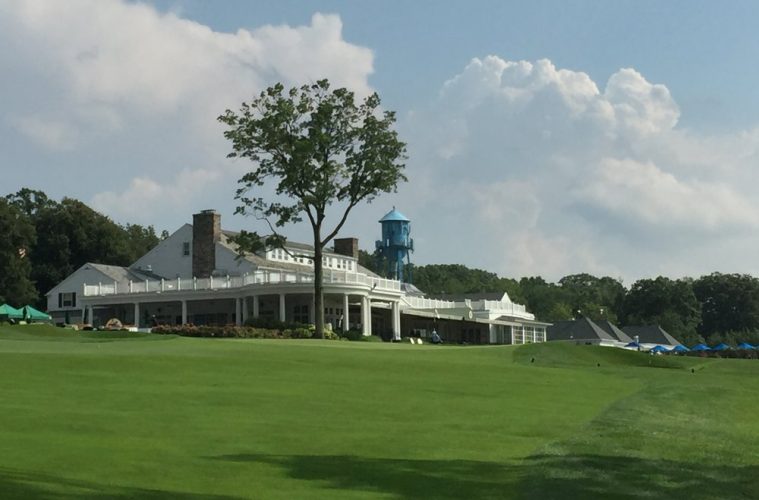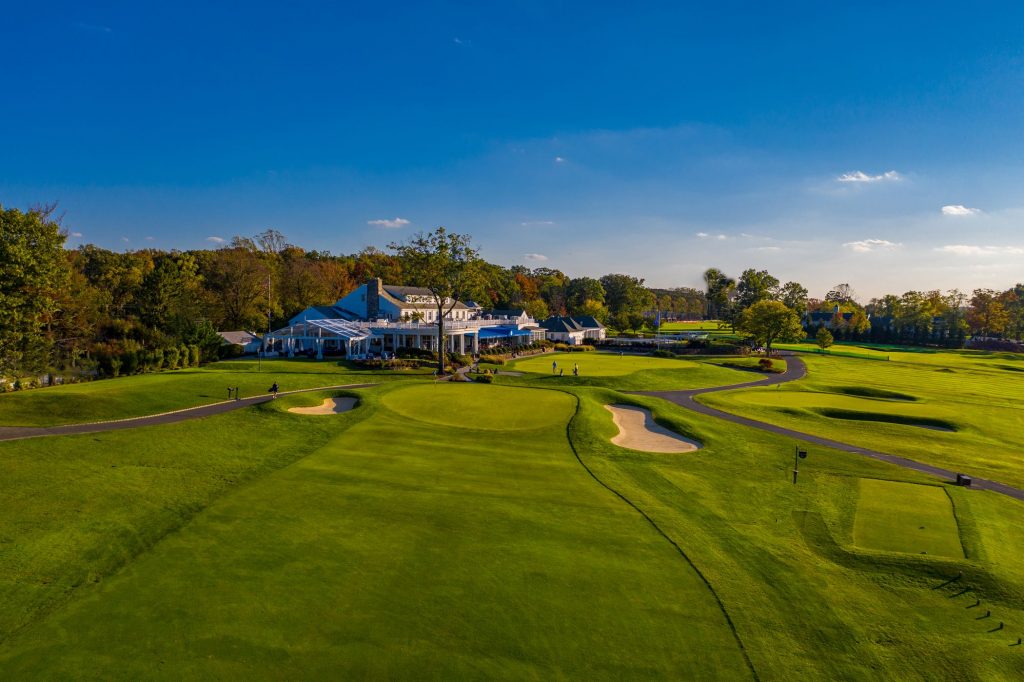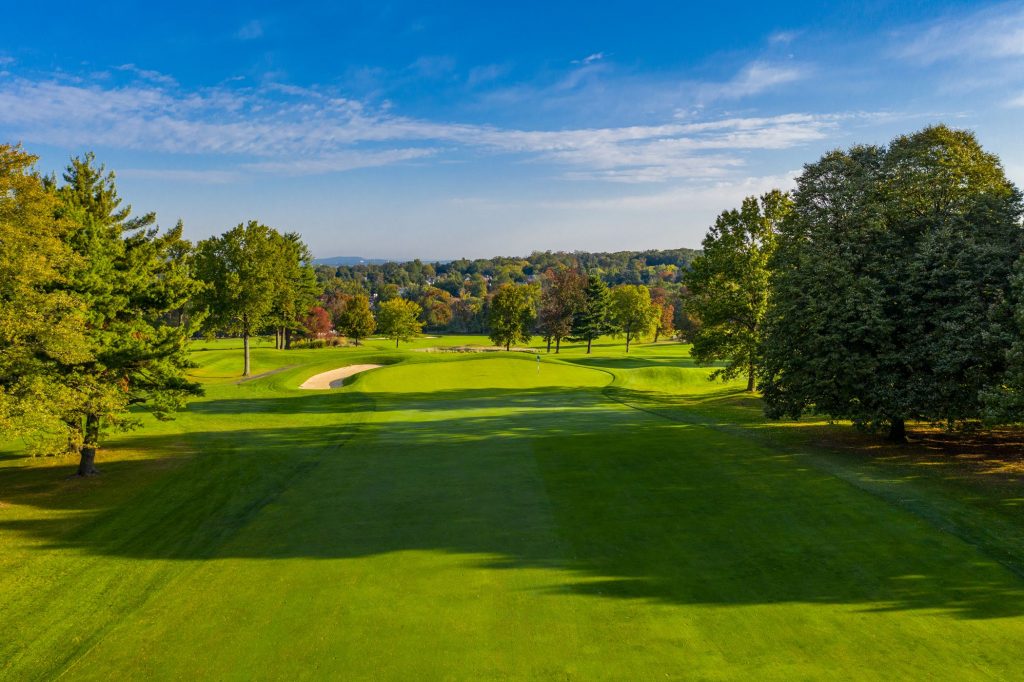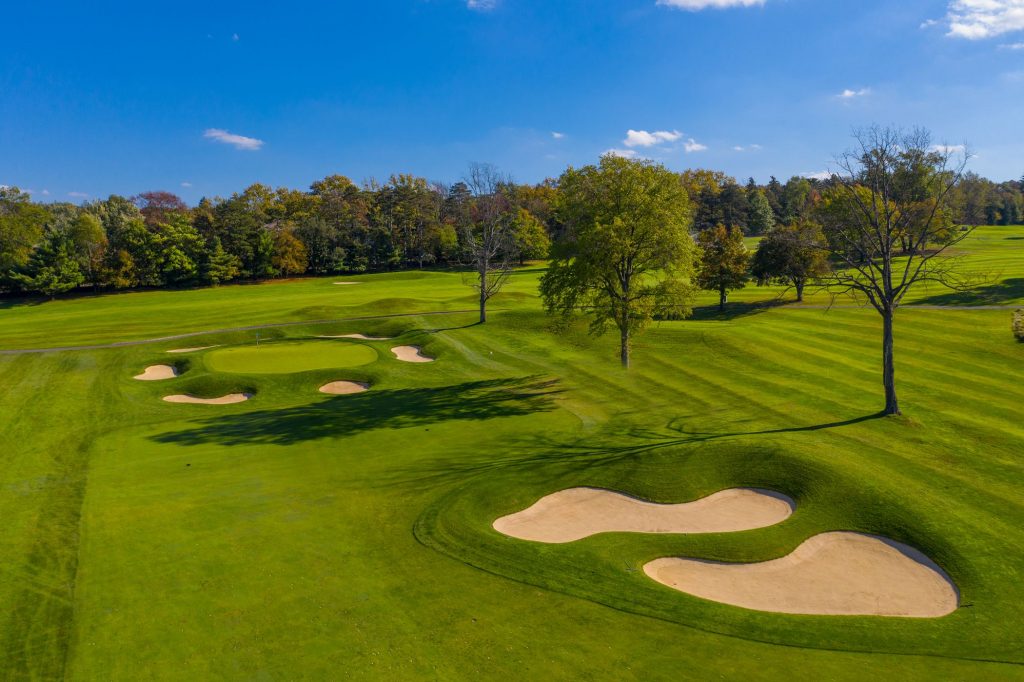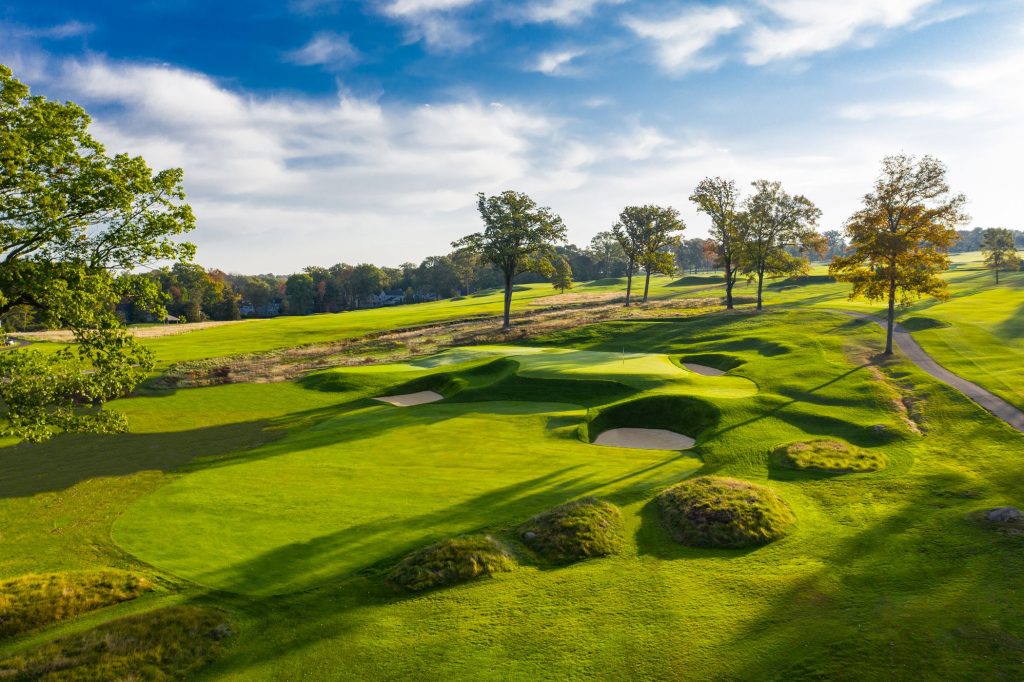by Matt Ward
A number of clubs– particularly on the private side — throughout the USA but most notably in the greater New York metro area have seen fit to upgrade their facilities — especially on the golf front. The pandemic caused a temporary spike in overall play and the various clubs that are engaged in this effort are doing so to bolster the loyalty of existing members and to draw the interest of prospective new ones.
This is the first of a series that will go into depth on how such matters are proceeding.
The first club being profiled is Montclair Golf Club — one of the oldest in the USA and dating back to 1893.
MONTCLAIR GOLF CLUB
The club is blessed to have 36 holes of golf — 27 by Donald Ross and the 4th nine by Charles Banks. I was present when the 1973 Women’s Amateur was played there as well as the 1985 U.S. Amateur
The par-5 6th works back down the hill — there’s also a split with the fairway and players have to decide whether the risk is worth the effort in attempting to get to the bottom of the hill on the far side. Two fairly simple holes follow before one concludes the side with a stellar par-4 at the 9th. The hole turns left in the drive zone and the need to find the fairway is paramount. The fairway tapers down considerably as the lengthy tee shot attempts to get as far up the fairway as possible. The green is ably protected by bunkers on both sides and has a number of internal movements that require a keen eye to decipher.
The 3rd Nine is where much of the remedial work has been carried out thus far. One of the elements first time visitors to Montclair now will not fully appreciate is how so many unnecessary trees were planted over the years. The clutter was beyond reason and frankly was compounded by a turf program at that time which routinely overwatered the landing areas. The truest golf at Montclair only comes when the turf is firm and fast allowing the ground to clearly be a factor when playing.
The key work at the 3rd Nine included redoing the bunkers and rebuilding four greens at the 3rd, 5th, 6th and 9th holes. The ones that were not done are being recontoured along the perimeters to regain lost pin positions. Teeing areas have also been built — most notably at the par-5 6th which goes from 508 yards to over 550 now — with the bulk of the yardage going uphill.
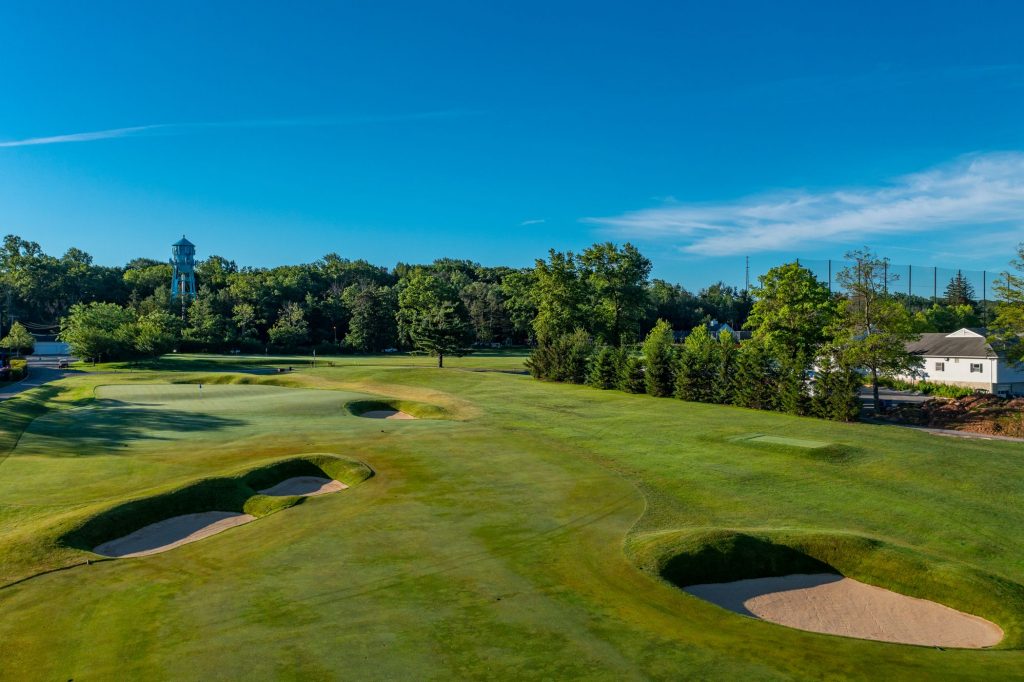
The finishing hole on the 3rd Nine climbs uphill and sporting a new green in alignment with the original Ross philosophy
The start of the 3rd Nine features a downhill tee shot but players have to ever mindful of a fairway that narrows as you near 300 yards with heavy rough grass that pinches in from that side.
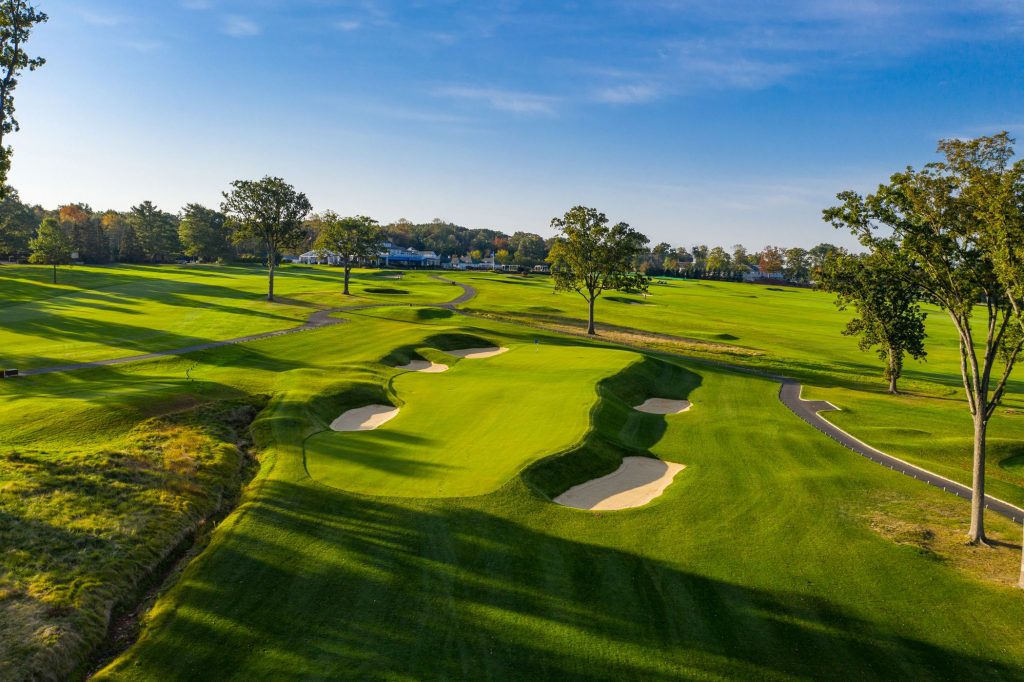
The par-3 5th on the 1st Nine is a new hole and challenges players to safely reach a green ably defended by flanking bunkers and a vexing green
The main issue for the 3rd Nine comes with the par-4 6th. The hole turns right and the aforementioned Peckman includes a serpentine connection. In times of heavy rain, the river has risen beyond its banks and the result has been a nightmare for the club to deal with. It will be interesting to see how this matter is resolved.
Fortunately, the greensite is not impacted and the newest creation is simply glorious — sitting above the fairway totally free of the inane clutter that previously surrounded it.
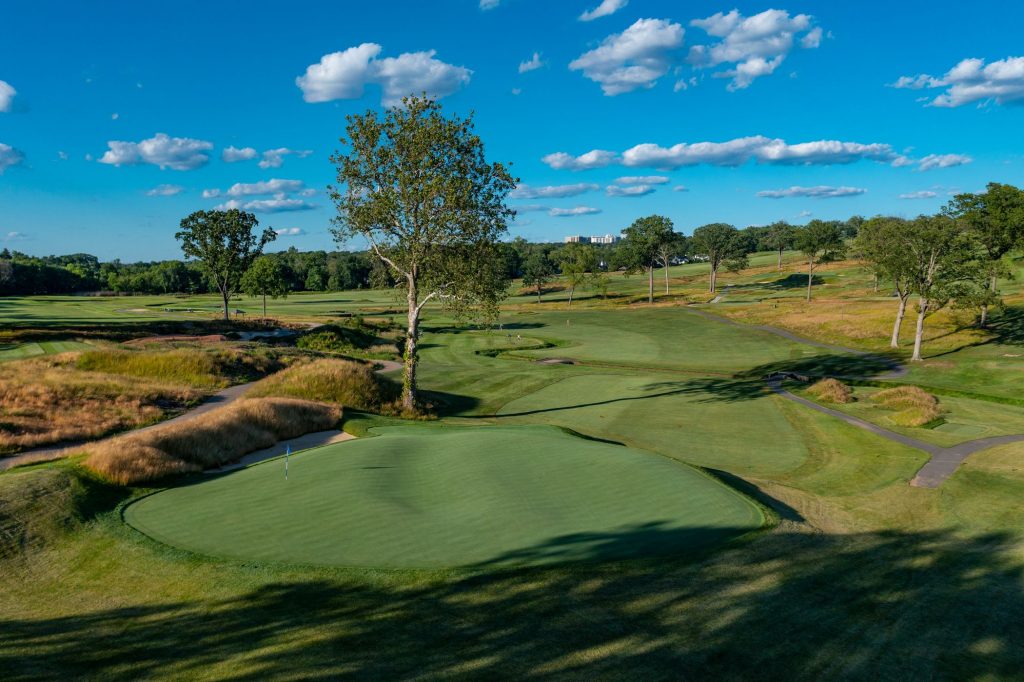
Golfers have to deal with the serpentine Peckman River when playing the par-4 5th on the 3rd Nine and then encounter an uphill approach to a striking green free of pre-existing clutter
The downhill par-3 7th has also been improved by enlarging the green and thereby provide for added pin locations. The uphill dog-leg left par-4 8th has been bolstered by the removal of countless trees that simply provided for interference from the protruding canopies.
We shall see.


